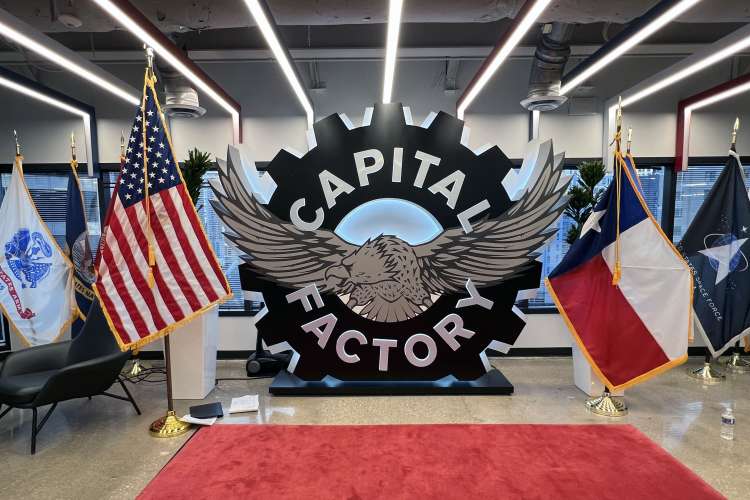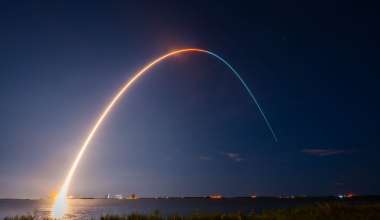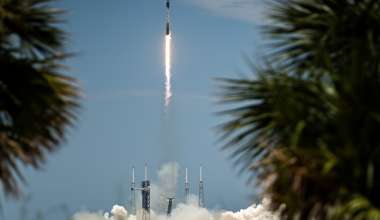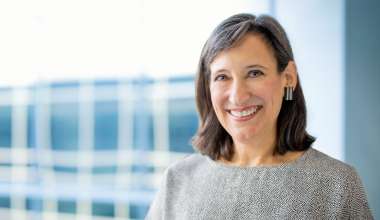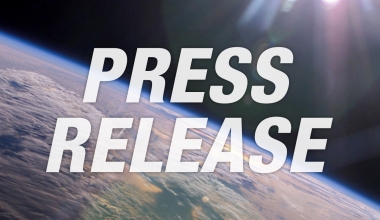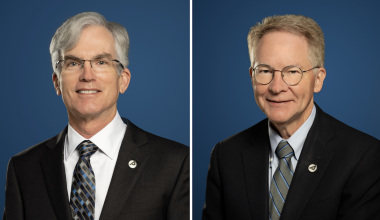Though not typically included in lists of America’s space hubs, Austin, Texas, is increasingly making the case to be considered. The Lone Star State capital features a growing space industrial sector, and Texas government leaders there have considered approving unprecedented public investment in commercial space to build on the already rich legacy of Texas contributions in U.S. space history.
Austin has also played host to South By Southwest (SXSW or South By)—one of the preeminent thought leadership venues in America—for 37 years. World-famous as an arts and music festival, SXSW also features a conference that upholds the festival’s ethos of changing the world for the better. Recent public interest in space achievements, such as the successful Artemis I mission and the deployment of the James Webb Space Telescope (JWST), has converged with these themes, bringing a higher volume of space-related content to the SXSW stage.
Nearly 100 aerospace and defense-themed panels and networking events dotted the 2023 SXSW conference slate, including five featuring senior leaders and technical experts from The Aerospace Corporation, who bridged a sharpening focus on space with the traditional SXSW principles of sustainability, collaboration and futurism by contributing to five panels alongside industry partners.
Finding Strength in Numbers
Aerospace President and CEO Steve Isakowitz joined Aerojet Rocketdyne President and CEO Eileen Drake and Stellar Solutions Vice President Robert Wright on a panel to discuss the Space Workforce 2030 (SWF2030) pledge. Launched last year at the 37th Space Symposium, SWF2030 documents a transparent and collaborative commitment by leading space companies to increase and expand the talent pipeline for the space industry’s technical workforce and leadership, through several focused efforts centered on hiring, education and STEM outreach.

“This is the most exciting time in America’s space program,” Isakowitz said. “The price of getting into space and building things to put in space has dropped dramatically. We’ve seen a huge inflow of investments and innovation. That’s the good news. Our big challenge is talent: not how to compete within our industry over the same relatively fixed pool, but rather how to grow the pool. For years, we’ve been trying to improve those statistics, but they’ve remained flat, with only pockets of improvement that don’t represent the huge improvements we need going forward.”
Much of the SWF2030 initiative’s focus is to bridge the period between grade school and college when many students are more likely of falling out of the STEM talent pipeline that can lead them to a career in space.
“I can’t underscore enough the importance of mentorship,” he said. “Without a doubt, it is mentorship that pulls students—particularly first-generation students—through school. Internships are so important that as part of this coalition effort, we have declared a National Space Intern Program for students to apply through a common application for the 30 different companies that have joined this pledge.”
Via Van Liew, Principal Director at Aerospace, moderated the SWF2030 panel and noted the value of reaching, in particular, the commercial space community congregated at SXSW.
“Building a vibrant talent pipeline is critical to helping solve some of the hardest problems in space,” she said. “This starts in K-12 STEM engagement and funnels through internships and aerospace engineering degrees into early-career employment. South By was a great platform to be able to have these discussions, to really lean in and speak to entrepreneurs and investors about how they can get involved in the momentum behind Space Workforce 2020 and help us move it forward.”
Ensuring Sustainable Space for Everyone
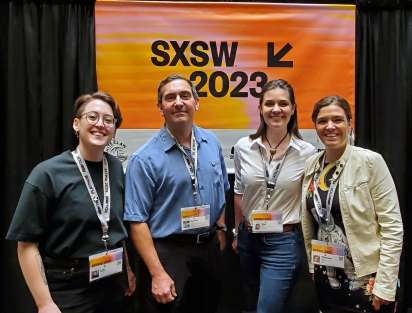
Touching on another core SXSW theme in sustainability, Aerospace contributed to two separate sessions on the challenges of navigating and mitigating orbital debris. Technical Fellow Marlon Sorge, executive director of the Center for Orbital and Reentry Debris Studies, was excited for the opportunity to engage nontraditional audiences on the subject of space junk, joining a panel hosted by Aerospace Industries Association’s Ilsa Mroz.
“Just because we don’t currently have issues accessing space, that doesn’t mean that this isn’t the time we should be taking action,” Sorge said. “Our panel had a great deal of focus on how to engage the public on this issue, and many audience members asked what they could do to help. My main point was that we need to hit things now, so we can prevent the problems from happening rather than trying to fix them later. It was a lot different than the conferences I’m used to attending. It was a whole group of other people that we haven’t dealt with before to reach with this message.”
At the Capital Factory startup incubator, which hosts the U.S. Air Force’s AFWERX in downtown Austin, Aerospace Chief Technology Officer Dr. Debra Emmons moderated an active debris removal panel featuring experts from space startups, including Dr. Moriba Jah of Privateer Space, Luc Riesbeck of Astroscale U.S., and Nehal Gajjar of iMetalx.

Emmons lauded the SXSW forum for its ability to convene space experts with stakeholders from outside the industry to solve problems that face all of society.
“We addressed the entire lifecycle of the debris challenge, what novel technologies and commercial solutions are coming onboard to address it, and how government and commercial stakeholders can consider space as a sustainable ecosystem and put policies in place to do so,” Emmons said. “With such a wide range of perspectives, empathy is important, and we are getting more input to help us think about debris with more of a holistic, systems-oriented approach.”
Inspiring Imaginative Futures for Space
While SXSW invites creative solutions to pressing challenges, it also fosters visionary discussions about humanity’s not-too-distant future. Parallel to the SXSW “2050” futurist track, Aerospace’s Paul Frakes led participants through an interactive workshop in which they used Aerospace’s Pathfinders Guide to the Space Enterprise to imagine realistically theoretical innovations that might mark the space economy in that timeframe.
“We had a number of folks come in from across engineering, business and finance to explore the possibilities of space and invent worlds within the 2050 epoch, to envision what that future could look like,” said Frakes, Systems Engineer for Strategic Foresight. “Because space is being put out there more to the general public, we’ve got opportunities for collaboration at places like South By with people we wouldn’t necessarily get to talk with otherwise.”
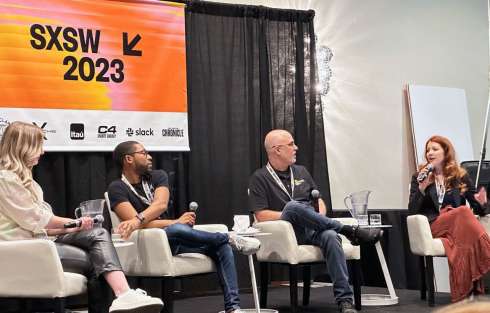
One tangible way space is shaping our future today is by offering us a window into the deep past. SXSW attendees learned about JWST’s transformational capabilities to capture ancient infrared images from the earliest days of our universe. Aerospace Senior Project Engineer Kenny Harris, who previously led main payload integration for JWST at NASA, noted the program may yet exceed its many early successes to date.
“This is just the beginning,” Harris said. “It’s only been up there for a year. We can utilize this in combination with other missions planned that aren’t even launched yet—say, hypothetically a telescope that has x-times the range or field of view that Webb has. Now we know where to point Webb to get those images and points a bit more in detail.”
For Harris, who first contributed to the program as a high schooler performing radiation tests at NASA’s Goddard Space Flight Center in Maryland, the suspenseful and ultimately successful deployment of JWST was more than just a technical achievement; it was deeply personal.
“It was a very moving moment for me,” he said. “My wife and I had our son in 2020, and I grew up watching rocket launches with my dad. This was one of the reasons I became an engineer growing up. This launch was the first one he was able to see on TV. For me to have been working on it since I was a teenager was a real full-circle moment.”
Expanding New Horizons for Aerospace
Isakowitz hopes success stories like Harris’ resonate in venues like SXSW and foster collaboration to create meaningful workforce opportunities and inspire the next generation’s leaders-in-waiting to take their place in space.
“I was struck by the number of people coming up to us, asking to talk with us,” Isakowitz said. “The fact that people are proactively more aware of what The Aerospace Corporation is doing is actually quite exciting. To hear our Space Workforce 2030 panelists talking so enthusiastically about the coalition and what we’re trying to achieve as an industry and seeing people in the audience nodding their heads in agreement was a moment of great pride.”
